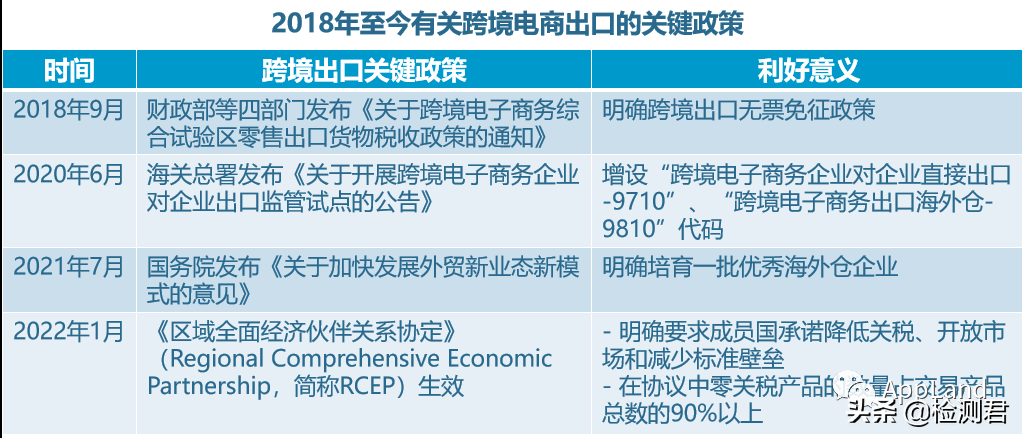Foreign trade people in 2021 have experienced a year of joys and sorrows! 2021 can also be said to be a year in which “crises” and “opportunities” coexist.
Incidents such as Amazon’s title, rising shipping prices, and platform crackdowns have made the foreign trade industry heartbroken. But at the same time, e-commerce has also begun to rise at an alarming rate. Under such an e-commerce background, how to keep up with the times and seize new trends is also a difficult task for the foreign trade industry.
So what is the outlook for the foreign trade industry in 2022?
01
E-commerce consumer demand surges amid the epidemic
In 2020, the new crown epidemic swept the world, and consumers turned to online consumption on a large scale, which stimulated the rapid development of the global e-commerce retail industry and wholesale industry. Online shopping can be said to be a part of consumers’ lives.
With the increasing number of online platforms, consumers have more and more choices, and consumers’ expectations have also increased. They also increasingly hope that enterprises can provide omni-channel consumer services.
From 2019 to 2020, e-commerce retail sales in 19 countries in Europe, America and Asia Pacific experienced rapid growth of more than 15%. The continued growth of the demand side has created a good incremental space for cross-border e-commerce exports in 2022.
Since the epidemic, most of consumers’ shopping will start from online shopping, and they will become accustomed to online shopping. According to AI Thority statistics, 63% of consumers are now shopping online.
Since the epidemic, most of consumers’ shopping will start from online shopping, and they will become accustomed to online shopping. According to AI Thority statistics, 63% of consumers are now shopping online.
02
The rise of social commerce
The epidemic has not only brought about changes in consumer shopping habits, but also one of the biggest changes is that the number of people using social media has increased, and social e-commerce has gradually emerged.
According to statistics from AI Thority, by the end of 2021, more than 57% of the world’s population has registered at least one social media platform.
Among these social media, platforms such as Facebook and Instagram are leading the trend, and these two social media giants have seized this opportunity to start the e-commerce market one after another.
Facebook has added a new feature that allows businesses and individuals to target potential customers through Facebook to drive product traffic and increase sales.
Instagram is also starting to break into the e-commerce market, most notably with its “shopping” feature. Businesses and sellers can use the “shopping tag” to sell directly on the Instagram app, which can be said to be the best case of social media combined with e-commerce.
Notably, consumers using social media are 4 times more likely to buy.
03
Cross-border e-commerce platform customer base further increases
Since the pandemic, the country’s door has not been opened, and foreign businessmen have not been able to enter China to purchase. In 2021, the number of consumers using both domestic and cross-border e-commerce platforms will increase exponentially. This grand occasion can be said to be unprecedented. It is foreseeable that the user population of these platforms will further expand in 2022.
The signal that consumers are starting to enter the online market can also be said to be an excellent opportunity for companies to enhance their competitiveness.
Due to the huge audience of online platforms, compared to offline brick-and-mortar stores, online platforms can acquire customers more easily.
The cross-border e-commerce track is undoubtedly a trillion-dollar gold track. With the continuous development and regulation of the industry, sellers in it have proposed various capabilities in terms of brands, channels, products, supply chains, and operations. increasingly demanding. With the rapid increase in the number of entrants in the cross-border e-commerce industry, the competition among foreign trade companies for the traffic of third-party e-commerce platforms has become more and more fierce. The model is difficult to promote the company’s growth for a long time, and the construction of self-operated platforms has become the development trend of cross-border e-commerce in the future.
04
The state continues to support the innovative development of cross-border e-commerce
Since 2018, the four key policies on cross-border e-commerce released in China deserve attention and attention. They are:
(1) “Notice on Tax Policies for Retail Export Goods in Cross-border E-commerce Comprehensive Pilot Zone”, September 2018
(2) “Announcement on Launching the Pilot Program of Cross-border E-commerce Business-to-Business Export Supervision”, June 2020
(3) “Opinions on Accelerating the Development of New Formats and Models of Foreign Trade”, July 2021
(4) Regional Comprehensive Economic Partnership (RCEP), January 2022
Data source: government websites such as the Ministry of Commerce
The “Opinions on Accelerating the Development of New Formats and Models of Foreign Trade” clearly stated that it is necessary to “support the use of new technologies and new tools to enable the development of foreign trade, improve the support policies for the development of cross-border e-commerce, and cultivate a group of outstanding overseas warehouse enterprises”.
In 2022, cross-border e-commerce marketing on overseas social media may usher in a “big year”.
It has been nearly 20 years since the development of the e-commerce field, and the e-commerce development model has also undergone several major changes. Although the past 2021 can be said to be an imperfect year for many foreign trade companies, no matter what the result is, foreign trade companies must adjust their mentality and start a new chapter in 2022.
Post time: Aug-10-2022







